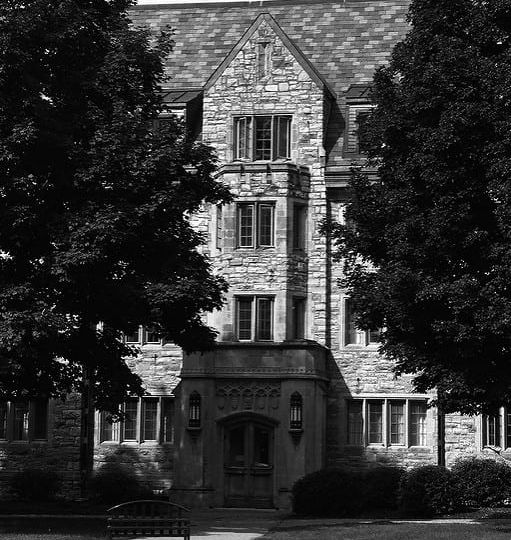
Without advance explanation or warning, students were asked to leave Rolvaag Memorial Library and other campus buildings on the night of Monday, Sept. 18. The buildings were then locked down and searched by Public Safety while Northfield Police patrolled the campus. An email from Public Safety Director Fred Behr later in the night explained that the search was the result of a report from a student of a potentially armed, unidentified individual on campus.
The initial report was filed to Public Safety at 8:45 p.m. after a student saw a group of three white males walking between Mellby Hall and Larson Hall, one of whom was carrying a long, thin object the caller believed could be a firearm, but was later confirmed to be an umbrella.
Public Safety contacted Northfield Police about the situation, and met with a number of officers at 9:05 p.m. The police officers were briefed on the initial report before being deployed on foot and in vehicles. Additional Public Safety staff was also dispatched. After searching footage from campus cameras, Public Safety officers identified and interviewed another witness, who offered additional information.
According to Behr, Public Safety made the decision to close campus buildings for the sake of locking and checking them without students present.
At 10 p.m. an announcement over the intercom in Rolvaag instructed students to leave the building. Public Safety officers went through Buntrock clearing out students.
“The usual statements would be something like ‘A situation has developed that requires us to lock this building early. Please leave through the nearest exit,’” Behr wrote.
Many students were confused about the situation. According to Public Safety dispatcher Sarah Kalsow ’19, who went into the dispatch office around 10 p.m. after being asked to leave Skifter Hall, the night was very busy.
“We had a lot of people calling wanting clarification,” Kalsow said. “We could only tell them so much. Usually when events like this happen, we have a prepared statement that Marketing and Communications prepares for us that we are allowed to tell us, but we are not allowed to answer further questions.”
At 11:02 p.m. a text message and email were sent out to students via the OleAlert system, a program designed to inform students about relevant emergencies on campus. As of 2015, all students are uploaded to the system by default.
With the subject line “Current Campus Lockdown,” the email and text read “Buildings were closed early tonight. There is no credible threat at this time. Please check your e-mail for additional details.”
At 10:52 p.m., prior to the OleAlert message, an email from Behr established that the object previously believed to be a gun was an umbrella, asked any students with information regarding the situation to contact Public Safety and notified the campus that they did not determine a current risk.
Behr isolated sending an OleAlert earlier, streamlining the notification process and specifying that it was not a lockdown but that buildings were being locked as the source of issues that would be considered in future situations.
“An Ole Alert would be issued to the campus when we felt there was a ‘credible threat’ or ‘hazardous situation’ on campus or near campus, Behr wrote. “Due to the very vague and conflicting information we were working with initially, we elected to hold off on sending the message prematurely.”

